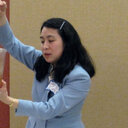Disruption of Tgfbr2 in odontoblasts leads to aberrant pulp calcification.
Słowa kluczowe
Abstrakcyjny
Transforming growth factor β (TGF-β) signaling has been implicated in dentin formation and repair; however, the molecular mechanisms underlying dentin formation remain unclear. To address the role of TGF-β signaling in dentin formation, we analyzed odontoblast-specific Tgfbr2 conditional knockout mice. The mutant mice had aberrant teeth with thin dysplastic dentin and pulpal obliteration, similar to teeth from human patients with dentinogenesis imperfecta type II and dentin dysplasia. In mutant, the odontoblasts lost their cellular polarity, and matrix secretion was disrupted after mantle dentin formation. As a consequence, the amount of predentin decreased significantly, and an ectopic fibrous matrix was formed below the odontoblast layer. This matrix gradually calcified and obliterated the pulp chamber with increasing age. Immunohistochemistry revealed decreased expression of alkaline phosphatase in mutant odontoblasts. In mutant dentin, Dsp expression was reduced, but Dmp1 expression increased significantly. Collagen type I, biglycan, and Dsp were expressed in the ectopic matrix. These results suggest that loss of responsiveness to TGF-β in odontoblasts results in impaired matrix formation and pulpal obliteration. Our study indicates that TGF-β signaling plays an important role in dentin formation and pulp protection. Furthermore, our findings may provide new insight into possible mechanisms underlying human hereditary dentin disorders and reparative dentin formation.




